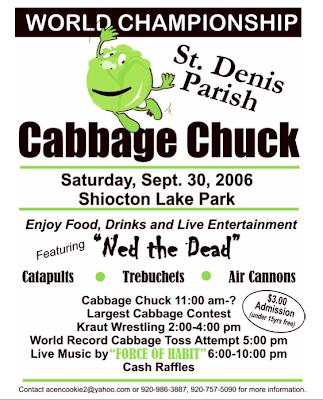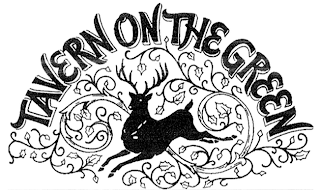 |
| Opposed mark |
TTAB decision Restifo v. Power Beverages, LLC has, count ’em, seven different trademark ownership theories discussed in it. My kind of case.
In 2006 opposer Restifo and trademark applicant Kidd first discussed a business arrangement for making YING YANG VODKA. Kidd described his method of doing business this way:
| [a]s an alcohol beverage, YING YANG VODKA would only be produced and [d]istributed by entities with appropriate license and expertese (sic) to obtain [a]ppropriate approvals, manufactured and established (sic) a distribution network. Hence, akbargloble (sic) or [I] myself do not directly sell this (YING YANG VODKA) or any alcohol products. |
In January, 2007 Kidd filed an intent-to-use application for YING YANG VODKA in his own name and in February, 2007 Kidd’s company, Akbar Globle Entertainment, entered into an “Endorsement Agreement” with a third party company called Ying Yang Tours, LLC. And so we start with ownership issue #1, albeit easily dispensed with: “While the agreement raises questions about whether [Ying Yang Tours] may have an ownership interest in the YING YANG VOKDA mark, [Ying Yang Tours] is not a party herein and the issue is not before us in this case.”
On March 17, 2007 Akbar Globle entered into an “Exclusive Sublicensee Agreement” with Restifo’s company Data Commodities. Ownership issue #2: who are the real parties in interest here, Kidd or Akbar Globle, or Restifo or Data Commodities? The question was resolved thusly:
| The evidence further establishes that both Messrs. Restifo and Kidd conducted business matters interchangeably in their individual capacities and through their respective companies, Data Commodities and Akbar Globle. The record shows that the individuals are the sole owners of their respective companies and that they controlled the corporate entities in their relevant business dealings. This degree of ownership and control overcomes any presumption that any rights acquired in the mark would inure to the corporate entities rather than the individuals. As explained by Judge Nies in a concurring opinion in In re Wella A.G., “the one entity which controls the nature and quality of the goods sold under the mark is the owner,” (emphasis in original). Here, the corporations were essentially the alter egos of the individuals. Accordingly, we construe all relevant activities taken by the companies as having been done at the behest and on behalf of the individuals. |
In the sublicense agreement, Akbar Globle granted Data Commodities an “exclusive, continuous, irrevocable and non-cancellable sublicense to utilize, sub-license, sell, commercialize and otherwise exploit” the YING YANG VODKA trademark. The agreement said that the mark was currently owned by Akbar Globle but that
| [Akbar Globle] also agrees to assign to [Data Commodities] fifty percent (50%) ownership in [the YING YANG VODKA trademark] owned by [Akbar Globle]… |
In June, 2007 Data Commodities solicited a distillery to produce YING YANG VODKA and Data Commodities sold two cases, the only sale of goods using the mark. Four months later, Kidd wrote to Restifo “to notify you that . . . our contract dated March 19, 2007 . . . is now null and void.” Kidd then entered into an agreement with third party Richard W. Hills for the production of vodka, the two created co-defendant Power Beverages, LLC, and Kidd assigned his intent-to-use trademark application to Power Beverages.
Restifo had pleaded ownership of the mark but didn’t try the issue of priority/likelihood of confusion. Instead, he tried only ownership issue #3, a claim that Kidd’s assignment of the intent-to-use application to Power Beverages was void under Section 10 of the Lanham Act. The parties conflated ownership issue #4, whether Restifo had his own ownership interest in the mark, with standing. But the two aren’t the same; standing only requires a sufficient interest in the proceeding, not that the opposer have superior rights altogether. Thus it was unnecessary to decide ownership issue #4. Nevertheless, the Board commented in a footnote that Restifo’s claim of ownership of the mark wouldn’t have succeeded anyway. Restifo claimed that he had prior use of the mark as a result of his sale of the two cases of vodka, but the sale was well after Kidd’s application had been filed so under § 7(c) of the Lanham Act Kidd had priority.
With the factual and procedural background out of the way, the Board finally reached the merits of the case and ownership issue #3, the assignment of the intent-to-use application. This is actually ownership theories #3a, #3b, #3c and #3d. First, Restifo claimed that because Kidd hadn’t sold any vodka before they entered into the sublicense agreement, Kidd had no mark that could have been licensed. Restifo therefore was not a licensee, so his use of the mark for the two cases of vodka didn’t inure to Kidd’s benefit. Not so, said the Board. For reasons #3a1, #3a2 and #3a3 Restifo is correct that Kidd couldn’t have assigned the mark if it didn’t exist:
| [#3a1] To the extent that the agreement may be construed as a promise to assign an ownership interest sometime in the future, i.e., upon acquiring rights after use in commerce, there would still need to be a second actual assignment of ownership. There is no evidence of record that any interest in the ownership of the mark was subsequently assigned to opposer once any ownership rights were acquired by Mr. Kidd through use of the mark in commerce.
[#3a2] Mr. Kidd’s filing of the intent-to-use application prior to entering into the agreement accorded him a constructive use (filing) date under Section 7(c), but not any ownership rights in the trademark. The constructive use priority date only becomes perfected upon actual use of the mark and is “contingent” upon successful registration of the mark. Put simply, Mr. Kidd was conferred a right of priority by filing the application; he did not have an ownership interest in the trademark. [#3a3] Moreover, and so as to be entirely clear, neither party has argued that the proposed assignment of ownership pertained to the intent-to-use application. The agreement, itself, does not identify the application whatsoever and we do not construe the purported assignment of ownership as involving ownership of the application. |
On ownership theory #3b, though, Restifo’s claim that the license was invalid so his use of the mark couldn’t have inured to Kidd’s benefit, Restifo was mistaken. One may license future use of an applied-for mark not previously used in commerce; in fact, the license agreement here contemplated that it was for the future use of the mark. Ownership issue #3c was a naked license theory, that Kidd hadn’t controlled the quality of the two cases of vodka Restifo produced and thus Restifo’s use didn’t inure to Kidd’s benefit but instead was for his own benefit. But
| there are two problems [#3c1 and #3c2] with opposer’s attack on the licensing agreement. First and foremost, a licensee is estopped from attacking a license (vis-à-vis the licensor) on grounds such as the licensor’s failure to exercise the necessary control. Second, even if opposer was not estopped from attacking the licensing agreement, it would be premature to invalidate the agreement based on Mr. Kidd’s failure to adequately control the quality or nature of the goods. The agreement was signed in March 2007 and Mr. Restifo received a termination letter from Mr. Kidd in October 2007. During those six months, opposer was the exclusive licensee and only one or two small shipments of YING YANG VODKA were sold. Despite the lack of any written provision regarding Mr. Kidd’s exercise of control over the quality of the goods or evidence that he actually asserted any quality control, there is likewise no evidence that quality control was an issue during that short time. Accordingly, we cannot conclude that preventing public deception based on varying quality standards of the vodka was ever such a viable or real concern that it invalidates the licensing provisions of the agreement. |
And we finally reach ownership issue #3d, whether Kidd’s assignment to Power Beverages was contrary to § 10 of the Lanham Act, which disallows assignment of an intent-to-use application “except for an assignment to a successor to the business of the applicant, or portion thereof, to which the mark pertains, if that business is ongoing and existing.”
Restifo had the burden of proof and failed to meet it. Zombie mark owners take note; as described above Kidd’s business was conceived and operated as a non-manufacturing, licensing business. The Board found Kidd had assigned the business in its entirety, along with the application, to Power Beverages:
| After the relationship with opposer terminated, Mr. Kidd “brought in” a third party and, with Mr. Hills, sought to have the YING YANG VODKA branded vodka produced. Moreover, by the terms of the December 3, 2008 agreement [between Kidd and Hills] (as incorporated into the December 12, 2008 Operating Agreement), Mr. Kidd assigned all rights he had acquired from Ying Yang Tours to Power Beverages ‘upon formation’ of [Power Beverages]. Finally, a review of the December 3 and 12, 2008 agreements reveals that Mr. Kidd relinquished any separate personal interest he had in the ongoing business; his remaining interest in the business thereafter was as a Member of Power Beverages, LLC. . . . Here, we are able to discern that Mr. Kidd assigned all interest in the application and the ongoing business to Power Beverages. |
And so the opposition was dismissed. Here’s the list:
#1: third party with superior rights
#2: corporate veil
#3a: assignment of (non-existent) trademark
#3b: licensing of future rights
#3c: naked license
#3d: assignment of ongoing business under Section 10
#4: priority
Hat tip to the Board for distilling a very confusing record down to a concise 24-page discussion of only the necessary claims (my summary hardly seems shorter). And thanks to John Welch at The TTABlog for the case.
Finally, for those of you who have hung in there this far, there is bonus ownership issue #5: Restifo’s trademark license was “irrevocable and non-cancellable.” If he makes vodka under the mark and is sued by Power Beverages, does he have a license defense?
Restifo v. Power Beverages, LLC, Opp. No. 91181671 (TTAB Sept. 21, 2011).

The text of this work is licensed under a Creative Commons Attribution-No Derivative Works 3.0 United States License.






